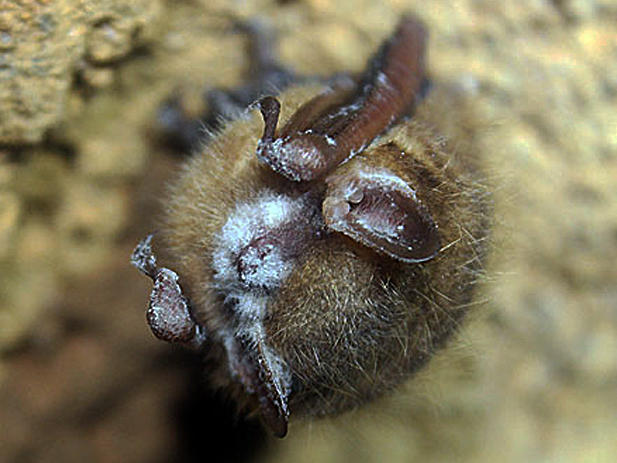Section Branding
Header Content
Tricolored bats could become endangered as a fungal disease decimates their population
Primary Content
A fungal disease that attacks while bats are hibernating has brought the tricolored bat to the brink of extinction. Now, the U.S. Fish and Wildlife Service is recommending that the tricolored bat be added to the list of endangered species in an effort to protect them.
Tricolored bats live in 39 states east of the Rocky Mountains, as well as parts of Canada, Mexico, Guatemala, Honduras, Belize and Nicaragua.
But white-nose syndrome — caused by a fungus that develops on cave-dwelling bats during hibernation — is decimating the bat's population in North America at "unprecedented rates," Fish and Wildlife Service Director Martha Williams said in a news release.
One of the smallest native species in North America, the tricolored bats spend the majority of the year in forest habitats. However, when winter rolls around, they seek shelter in caves and mines to hibernate, which is when they are susceptible to disease, the FWP says.
The fungus, Pseudogymnoascus destructans, can resemble white fuzz on a bat's wings and snout, attacking bare skin while the animal is hibernating. According to the FWP White-nose Syndrome Response Team, the fungus causes the bats to become more active when they should be hibernating, burning off the little energy they have to survive the winter.
White-nose syndrome has killed off millions of bats across the continent, the FWP said, wiping out 90% to 100% of colonies in some sites. Scientists still don't know where the fungus came from, but it has been found in 12 of the 47 species living in North America, including two currently protected by the Endangered Species Act.
The disease is also ravaging the northern long-eared bat population, which FWP recommended reclassifying from threatened to endangered last March. The FWP says bats are critical to the healthy functioning of an ecosystem, and that they contribute at least $3 billion in pest control and pollination every year.
Copyright 2022 NPR. To see more, visit https://www.npr.org.

